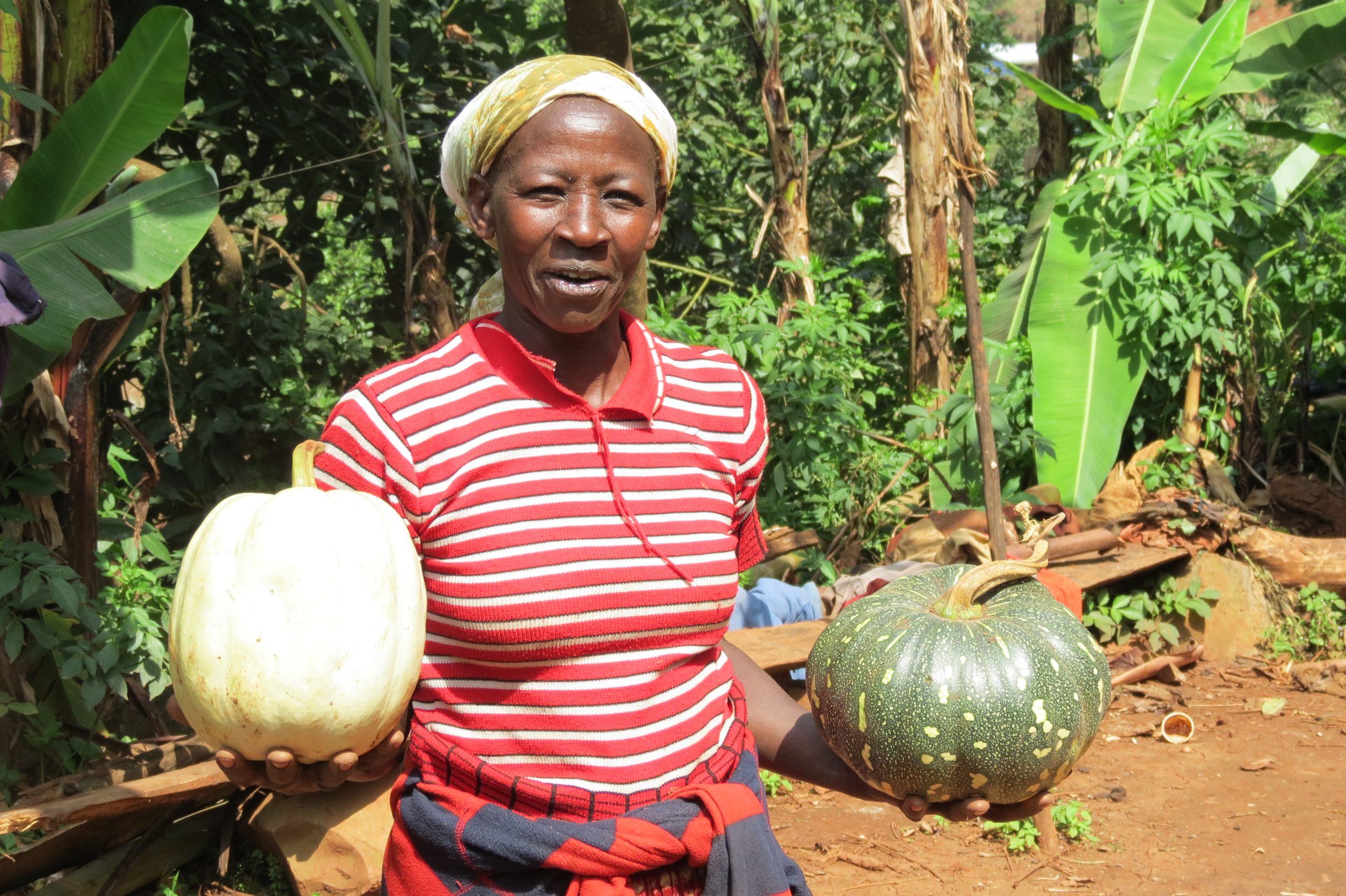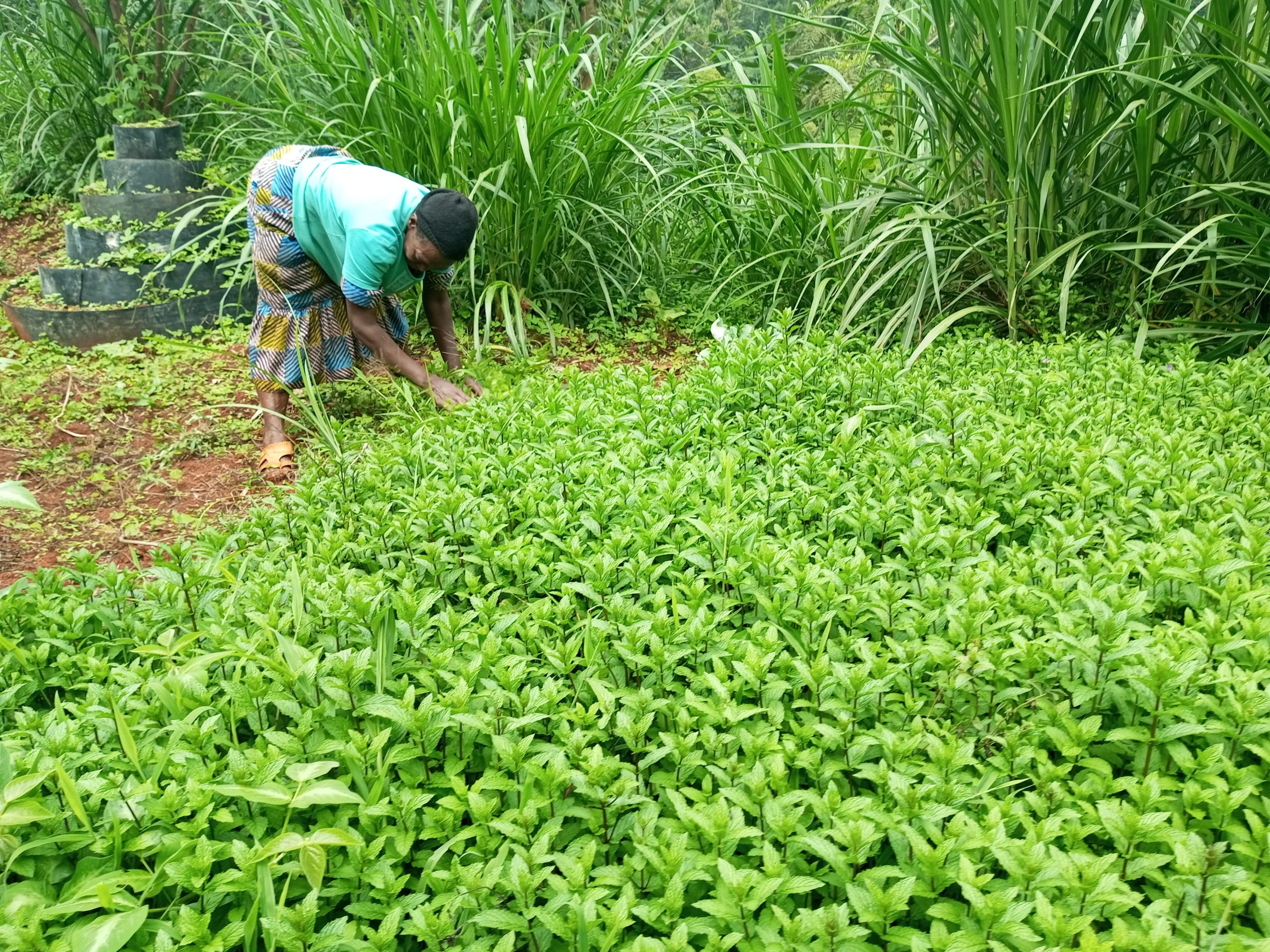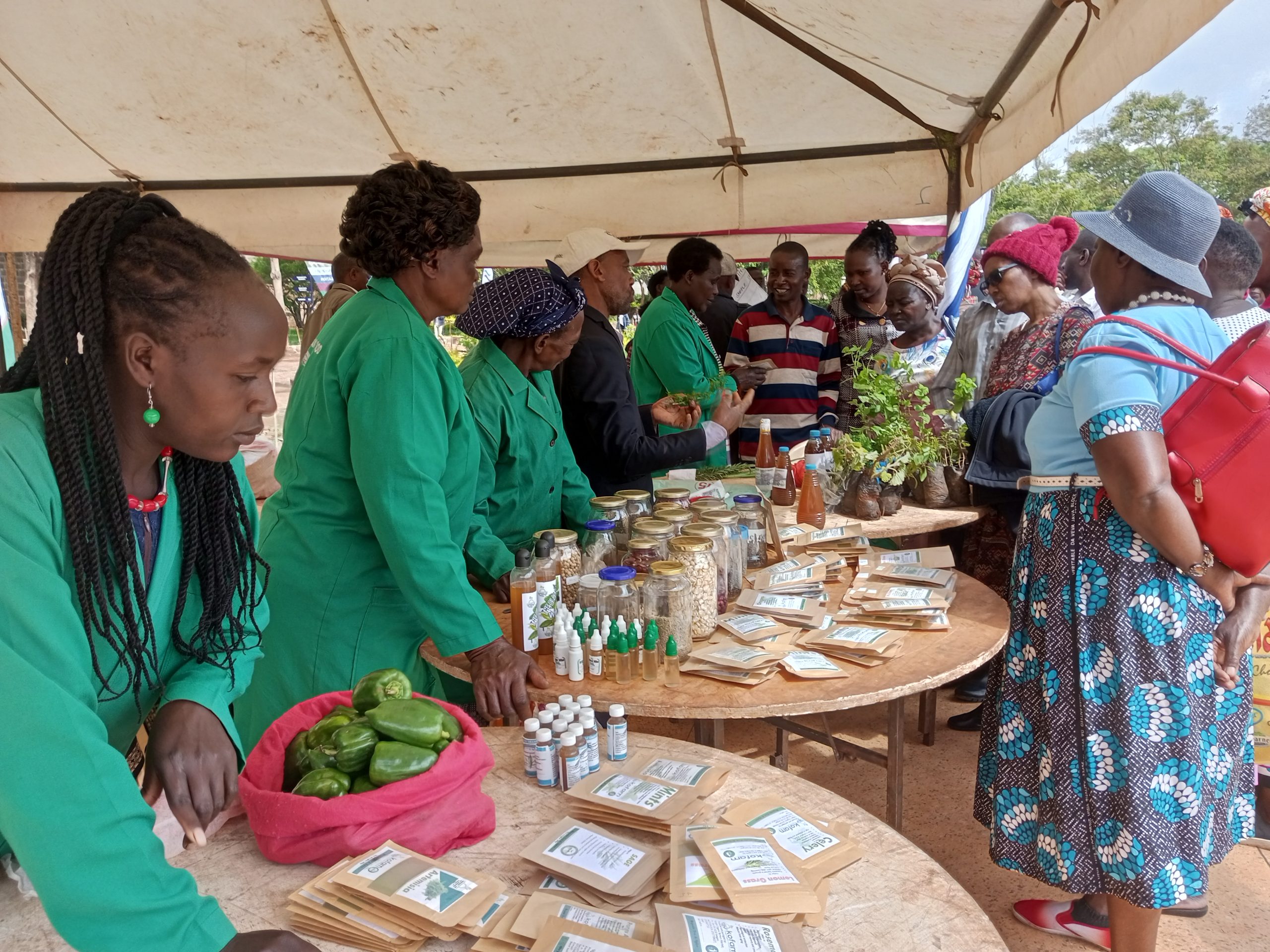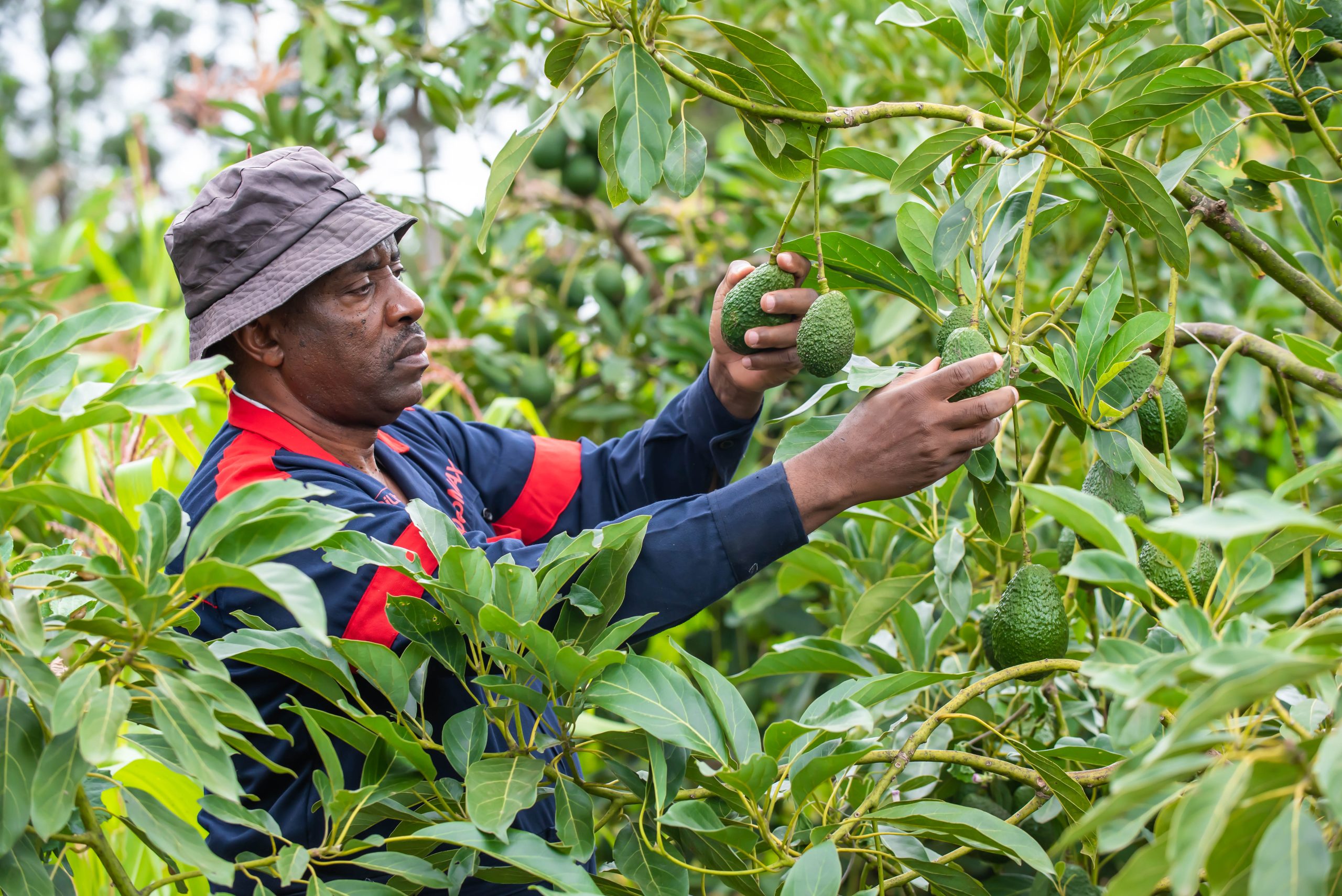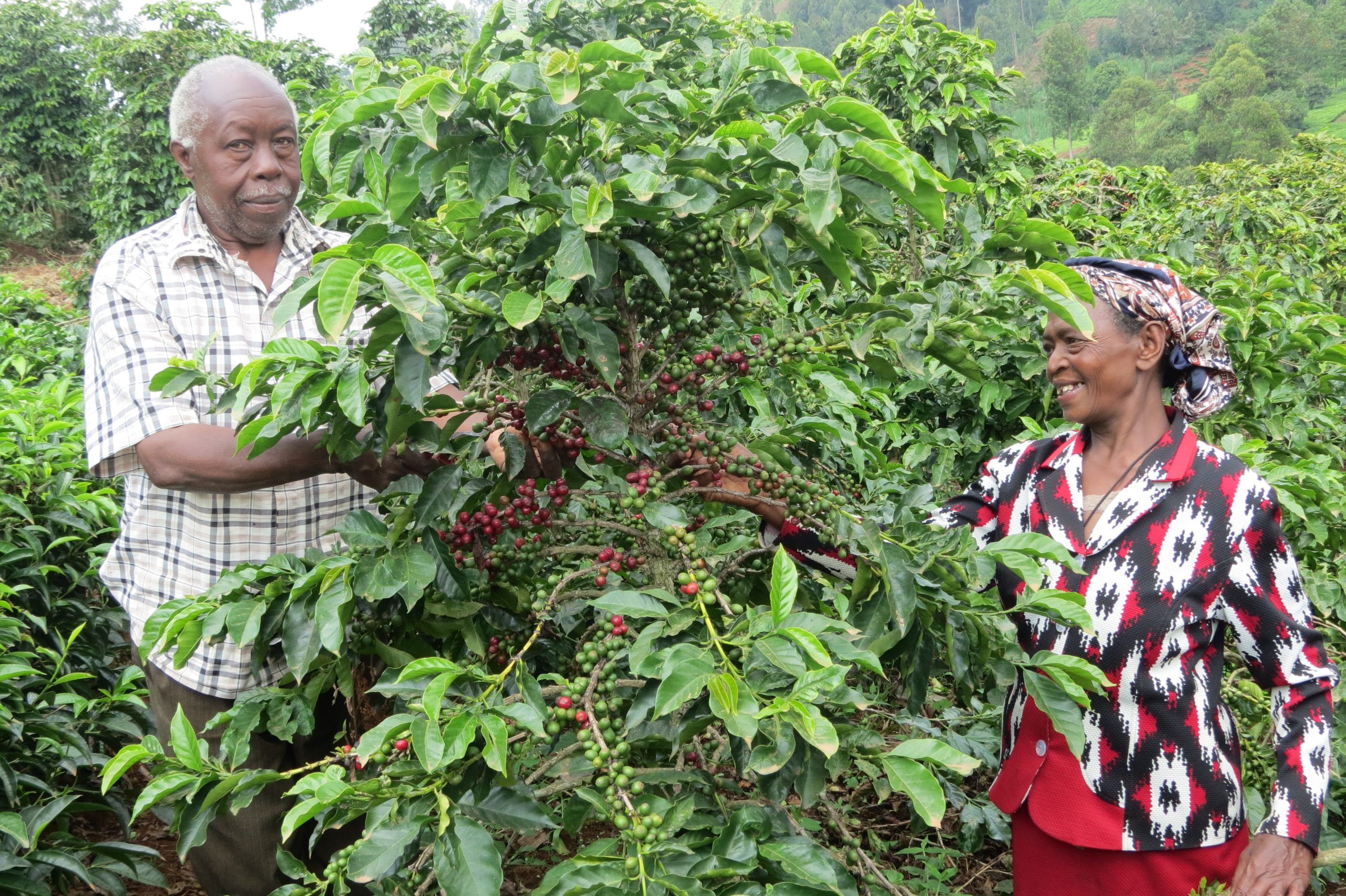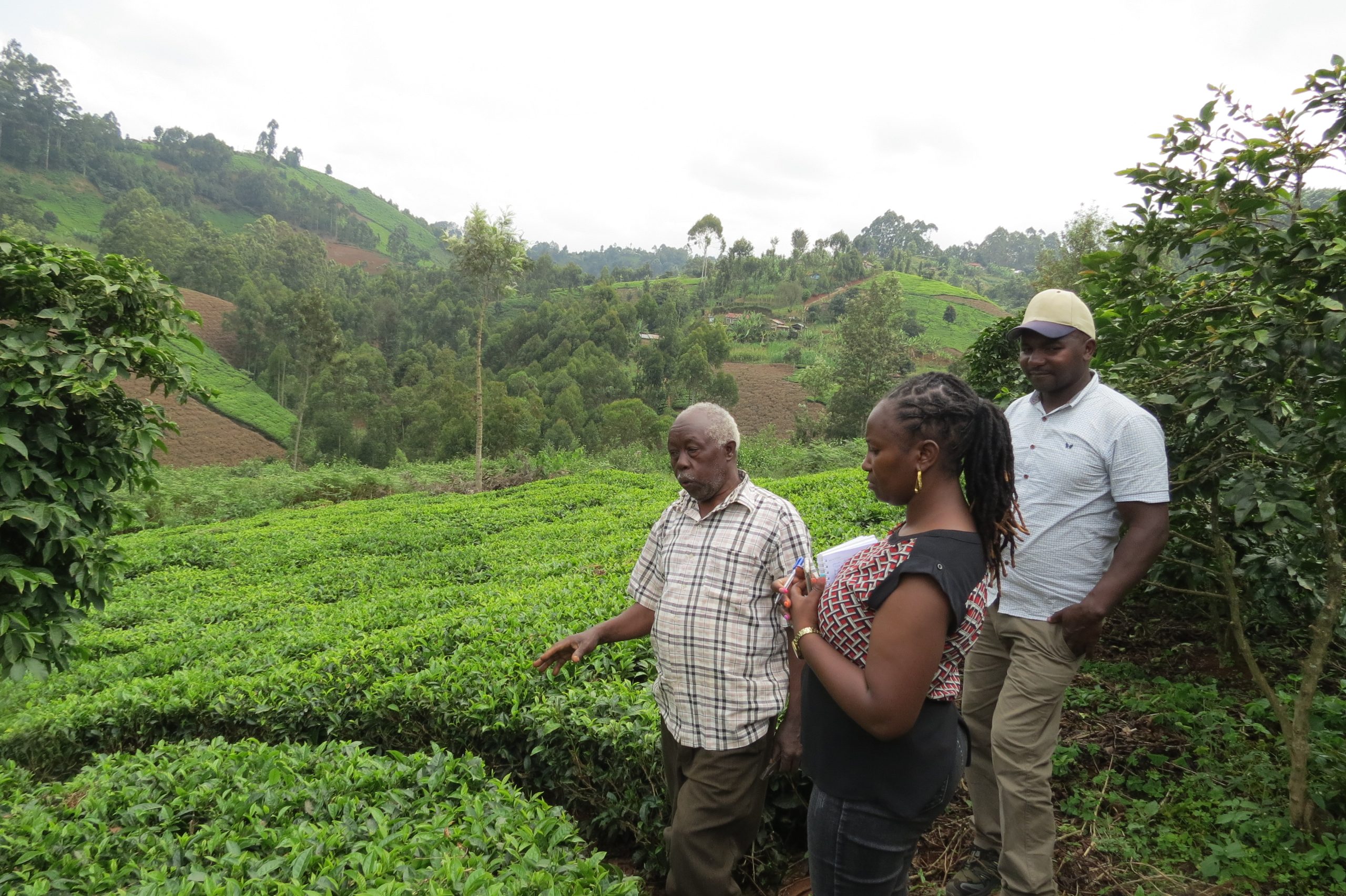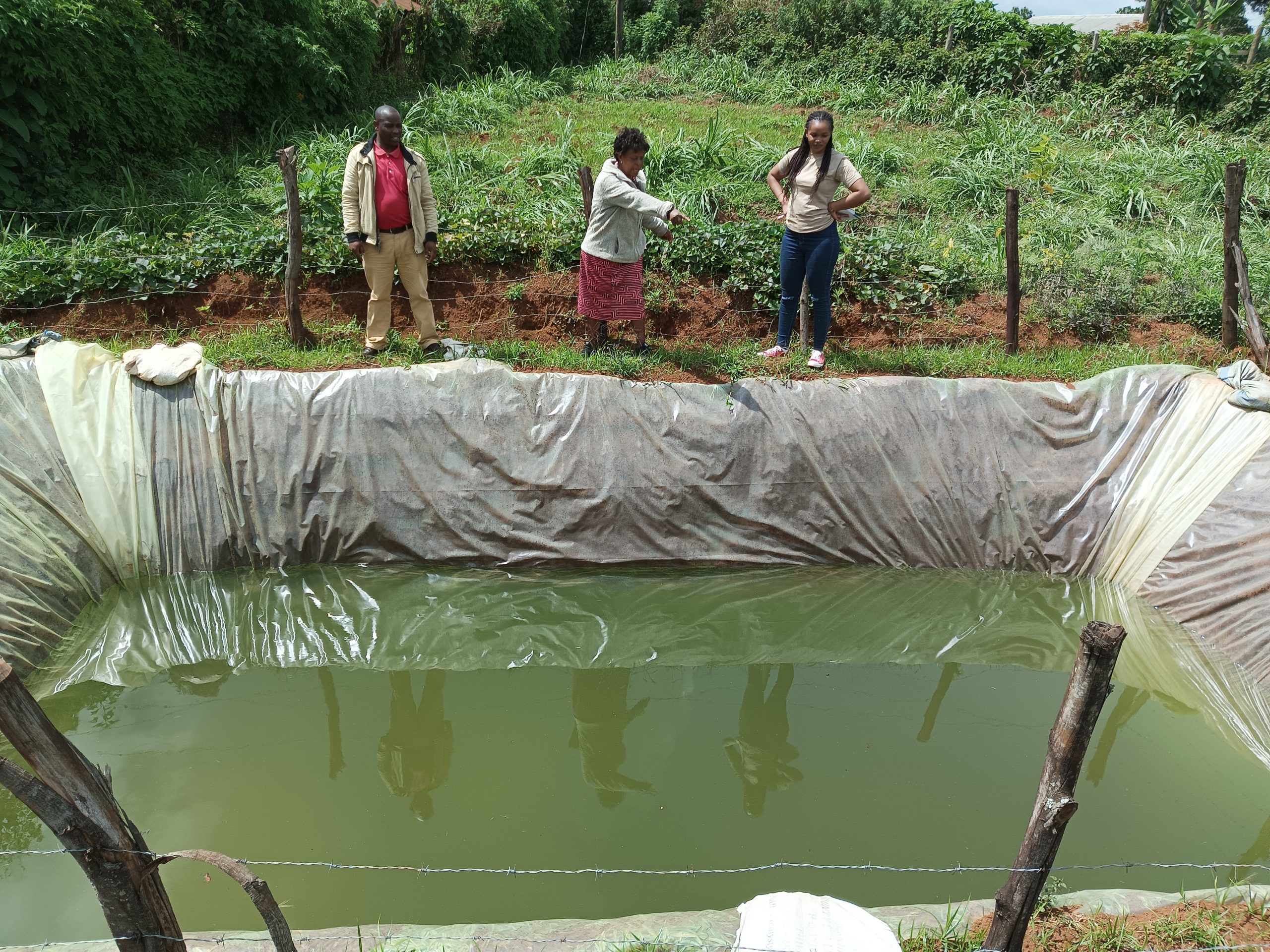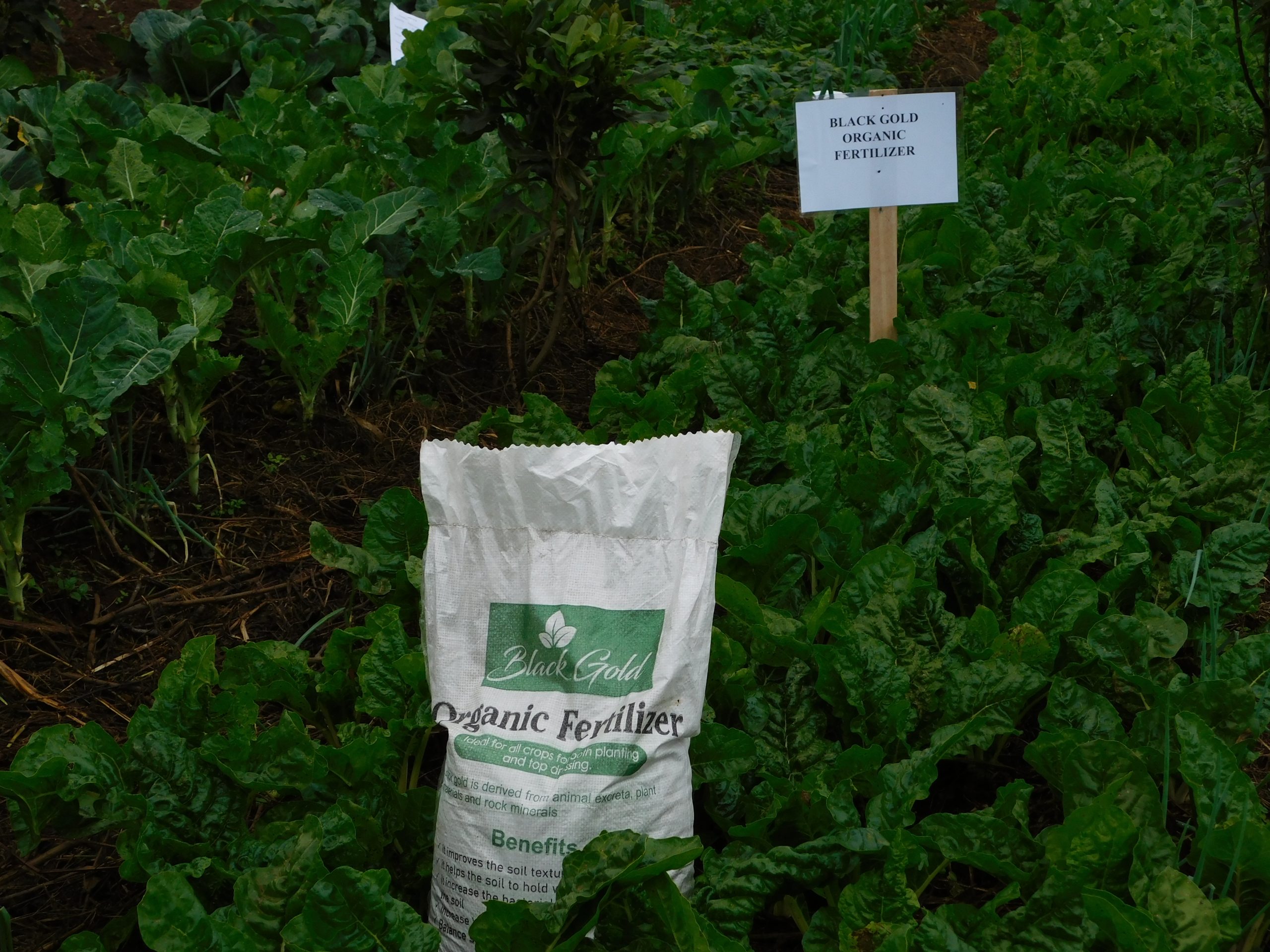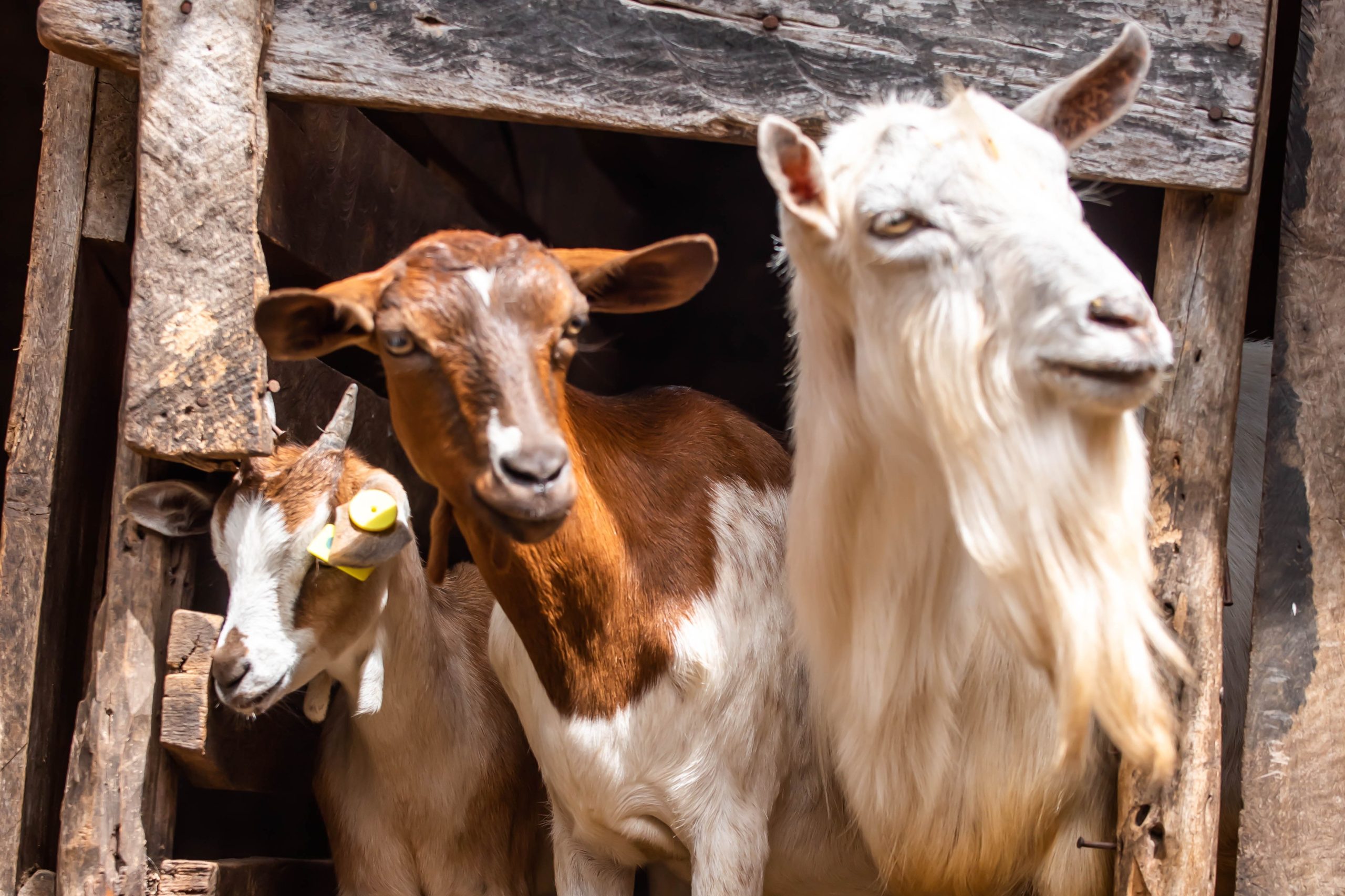Promoting on-farm diversification through watershed management
Kenya
The project implements watershed management practices to promote on-farm diversification and generate revenues to farmers, while addressing climate change and droughts faced by Kenya’s Kiambu and Muranga counties.
Lead organization
Participatory Ecological Land Use Management (PELUM) Kenya is a national network of 60 member-organizations operating in 47 counties. Its vision is “empowered, prosperous and healthy communities in Kenya”. It works to promote agroecological principles and management practices for improved livelihoods among small-scale farmers and pastoralists in the country.
The project is implemented in collaboration with five member-organizations:
Countries
Kiambu and Muranga counties of Kenya.
Timeline
The project started in 2017 and is still running.
- The first implementation period was from 2017 to 2019 under the Food Security and Livelihoods Programme (FOSELI).
- The second implementation period was from 2019 to 2021 under the Integrated Watershed Management for Diverse Farming Enterprises (IWAMA-DIFE I) Programme.
- The third implementation period was from 2022 to 2023 under (IWAMA DIFE II).
- The 4th and current implementation started in 2024 under the Integrated Water Shed Management (ABEIWAN) Programme. It is still running.
Funding
As of 2017 until now, the total project cost is 330,000 British Pounds (385,000 Euros), funded by the UK-based Tudor Trust .
Mission
The aim is to positively impact farmers’ lives through the uptake of agroecological practices.
Context
The project is implemented in the landslide-prone Muranga Aberdares and Riparian Forests. The area also suffers from the impact of climate change and droughts. The Aberdare Ecosystem is divided into five distinct zones (i.e. High Use Zone, Low Use Zone, Wilderness Activity Zone, Multiple Use Zone and Influence Zone) which support the desired and legally acceptable land uses in the ecosystem. These land uses include tourism, biodiversity protection, forestry and its associated uses, such as livestock grazing and plantation establishment.
Aberdare Forest Reserve plays a critical role in water catchment functions for the country. It is one of Kenya’s five main “water towers.” It is the main water catchment area for Sasumua and Ndakaini dams, which provides water (both surface and subterranean water) to Nairobi city and adjacent towns of Thika, Nyeri, Naivasha, Nyahururu among others.
Currently, communities living adjacent to the Aberdare Forest Reserve are mainly farmers and producers given the fertile soils and reliable rainfall in the area. Farming is thus the main economic activity in the adjacent communities around the ecosystem. The farming practices are both large- and small-scale where the land ownership is mainly freehold (private ownership). The main cash crops include tea, coffee, wheat, horticulture and floriculture. Other land uses include livestock, wildlife tourism, forestry, fishing, urbanization and human settlements. The main uses of water within the catchments are domestic, irrigation, hydropower generation, industrial, fisheries and ecological services.
Main beneficiaries
Small-scale farmers, especially tea producers.
Strategy
Objectives
The objectives of the project are:
- To increase the food and nutritional security of small-scale tea farmers in Kiambu and Muranga through agroecological practices, diversified on–farm enterprises, and established market outlets;
- To promote conservation, rehabilitation and protection of the riparian areas and sustainable watershed management within the target project area;
- To advocate for the implementation of policies, legislations, and programs that strengthen the protection and management of watersheds and ecosystems.
Type of farms: Organic green and black tea plantations.
Why was the consortium created?
- To enhance linkage among partners;
- To leverage expertise of different partners (e.g. some have strengths in water management, some others on bio-inputs, etc.);
- To have more impact on advocacy work;
- To build on the different strengths among partners.
Activities
The project’s activities focused on several key Agroecology Principles / Elements including:
- Economic diversification: some farmers use the profits of tea production to buy food, so the objective was to incentivize them to produce food and raise animals by themselves (e.g. rabbits, cows, beekeeping, agroforestry, crops such as sweet potatoes and manure).
- Input reduction: most of the tea farmers added a lot of external inputs such as fertilizers, so this project encourages them to produce natural bio-inputs themselves (such as Biokashi or fertilizers made from eggshells, rock dust and cow dung).
- Biodiversity and Climate Action: they partnered with school to plant trees (through COSDEP and OACK) and set up beehives. This effort led to a noteworthy increase in tree cover, involving the planting of nearly 100,000 indigenous trees, giant bamboo seedlings and hass avocado fruit trees in riparian areas. Moreover, the organization provided her with cover crops, such as vetiphas grass, specifically designed to mitigate soil erosion. Vetiphas grass proved to be an effective solution, firmly holding the soil together and preventing it from being washed away by rain. They also trained women to cook while saving energy costs (e.g. better management of wood). They also supported farmers to set up water pans to harvest water for the plantation.
- Circular and Solidarity Economy: After COVID, they started local organic farmers markets to re-localize consumption (jn Githumu, Kirwara and other counties), allowing farmers to sell in different markets and have shorter value chains. They also focused on growing indigenous food recognized by the local community.
- Co-creation of knowledge/ Cultural and Food Traditions: PELUM does a lot of capacity building activities, through peer-to-peer learning exchanges and farms visits. They also organized some cooking training because they realized that farmers were not cooking what they were producing.
- Responsible Governance: Muranga County is the first county in Kenya to have developed a policy on agroecology. They also invited one representative from the Ministry of Agriculture to plant a tree during an event held in the Aberdares forest. They organized farms visits between farmers and Muranga County decision-makers to GBIACK. They created training manuals as well as a curriculum on ecological agriculture.
Effects and Impacts
Evaluation methods
The evaluation undertaken included focused group discussions, field visits to observe the changes, and a survey disseminated among project beneficiaries.
Outcomes
The Project reached 2,700 households in Kiambu and Murang’a counties. Based on the Phase Two End-Term Evaluation, among the 150 sampled households, the following outcomes were reported:
- 73.2% reported improved incomes through diversified income-generating activities.
- 30.9% benefited from enhanced marketing opportunities for their farm produce.
- 68.6% strengthened their resilience to climate change through adoption of agroecological practices.
- 30.4% gained improved access to potable water for household and farming use.
- 50.5% increased their participation in community forums and decision-making processes.
In this final phase, the project has supported four County governments in the development and finalization of four Conservation policies: Murang’a County has already finalised and adopted Riparian Land Conservation and Alien and Invasive Species Management Policies. In addition, Nyandarua County is at an advanced stage of formulating a Natural Resources Management (NRM) Policy, Kiambu County is finalizing an Agroecology Policy and Nyeri County is advancing a Riparian Land Conservation Policy.
Lessons learned and results
- Having a Joint-Programme implementation enhances synergy and builds on strengths of various organizations;
- Farmers learn best through their peers. Supporting farmer-to-farmer learning and experience/knowledge exchange has proved to increase adoptability of the initiatives, through activities held jointly by FOSELI partners such as exposure learning visit, training on small livestock and marketing as well as exhibitions.
- The involvement of various stakeholders and duty bearers is a key driver for successful advocacy work. It was hard to convince them at first, but now that they can see the first results of the project, it fostered a dynamic and a driver to elaborate the Agroecology Act and Policy.
- Knowledge dissemination on agroecological farming practices positively impacted nutrition, health, and the environment.
- Adoption of organic fertilizers minimized reliance on chemical inputs, improved soil fertility, leading to higher yields and increased incomes.
- Ecosystem conservation, particularly watershed management, resulted in less intensive farming along riparian areas, reducing soil erosion and pollution.
- The project facilitated the creation of organic markets, contributing to increased household income through the sale of surplus diversified crops. Farmers, supported in income-generating enterprises like beekeeping and poultry farming, achieved product quality and consistency to meet market demands.
- The project strengthened communities’ capacity for lobbying and advocacy.
- The project contributed to improved access to highly nutritive food resources, resulting in better food and nutrition security for target households, healthier diets, and reduced malnutrition.
- The cultivation of hass avocado fruit trees and other tree species, aided in soil erosion control and contributed to improved food, nutrition, and income security.
Limiting factors
- The landscape in Muranga Riparian had to be restored (as there is a lot of landslides) by using vetiphas grass and bamboo trees;
- Climate change: integration of water harvesting, watershed, and conservation:
- Time management amongst the tea farmers is very critical. The tea farmers have a tight schedule for picking tea and taking it to the factories. Therefore, to ensure their full participation the implementation team must keep up with the time and schedule.
What are the next steps?
- Develop an ecosystem approach on watershed management/governance with more stakeholders supporting the initiative;
- Support development of research on organic green and black tea; and
- Support bio-inputs (made by farmers) packaging and development.
Although I was initially skeptical, I soon became a staunch advocate for organic fertilizers after witnessing the remarkable turnaround on our farm…The increased yields were so significant that we expanded our coffee plantation from just 86 bushes to an impressive 300, driven by the promise of high returns and sustainable farming practices. This marked a big shift from our reliance on commercial fertilizers for over 15 years, which had never delivered the results we hoped for.
Despite the continuous rains, we have not witnessed a single landslide because of the mitigation measures we’ve implemented, thanks to SACDEP and PELUM Kenya. Murang’a is a slopy land, very prone to landslides and mudslides, but with the planting of cover crops, bamboo along the riparian areas and on the slopy farms, as well as the fruit trees like avocados provided by SACDEP, the soil has become more stable. These measures are giving us a long-term solution to the erosion challenges that have plagued our community for years.
I decided to diversify by cultivating herbs and spices on just a quarter-acre of my land. The financial returns have been remarkable—much higher than what I could earn from a much larger area under coffee. For many of us, subdivision of land has left only small and uneconomical parcels under tea and coffee, so we must diversify into higher-value crops. Growing herbs like chia, basil, fennel, thyme, rosemary, tarragon, mint, and oregano has truly become a thriving enterprise for me and other farmers in Kangari.
Contact
Contact: Rosinah Mbenya, Country Director, PELUM Kenya, rosinah@pelumkenya.net
Picture credits: PELUM Kenya

